3927 people reached on Facebook Lassi with Lavina page – 407 engagements – FB Insights
The Indian-American Vote: The 2020 US Presidential Race
Will it be Four More Years for Trump?
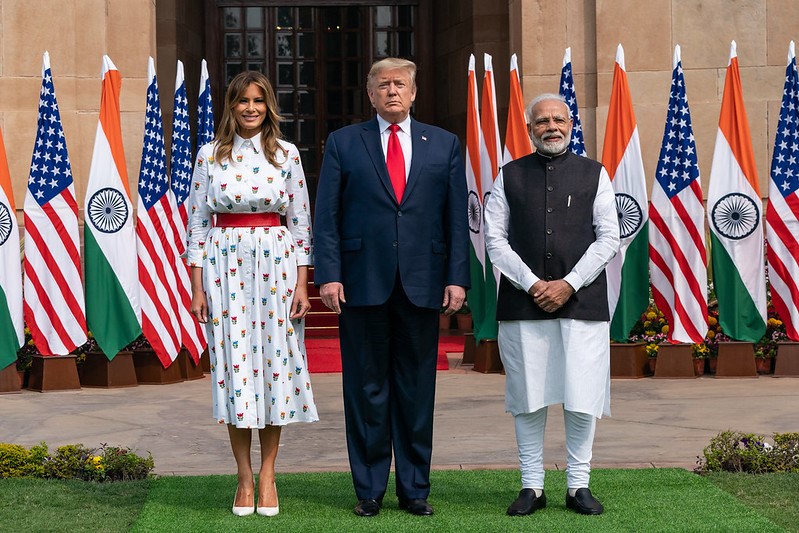
[dropcap]Y[/dropcap]ou could call them some of the most desirable voters in America that any political party would love to have in their ranks. Indeed, Indian-Americans seem to be in all 50 states and are strong players in the American political scene. They are educated, affluent, active and involved. According to US census figures, the Indian-American population is 4.5 million strong, and from 2010-2016 grew at 127.2 percent. This is a young, vibrant community with 55.8 percent in the 18-49 age group, and 73.2 percent having a Bachelor’s degree or higher in education.
So how is this viable block of American citizens going to vote in the upcoming presidential elections? Will they vote for a Democrat in the White House or four more years for Donald J. Trump?
[dropcap]T[/dropcap]he fact is that the answer changes depending on whom you ask. America today is definitely a nation divided. M.R. Rangaswami, chairman and founder of Indiaspora, a national community organization, has been in the US for 40 years and has seen the changing status of the Indian immigrants. Rangaswami, who is also a software executive, investor and philanthropist in Silicon Valley, has seen the Indian-American community evolve from mere bystanders who wrote checks for photo ops with the political bigwigs to having real clout in the political scene, and being sought after by both parties.
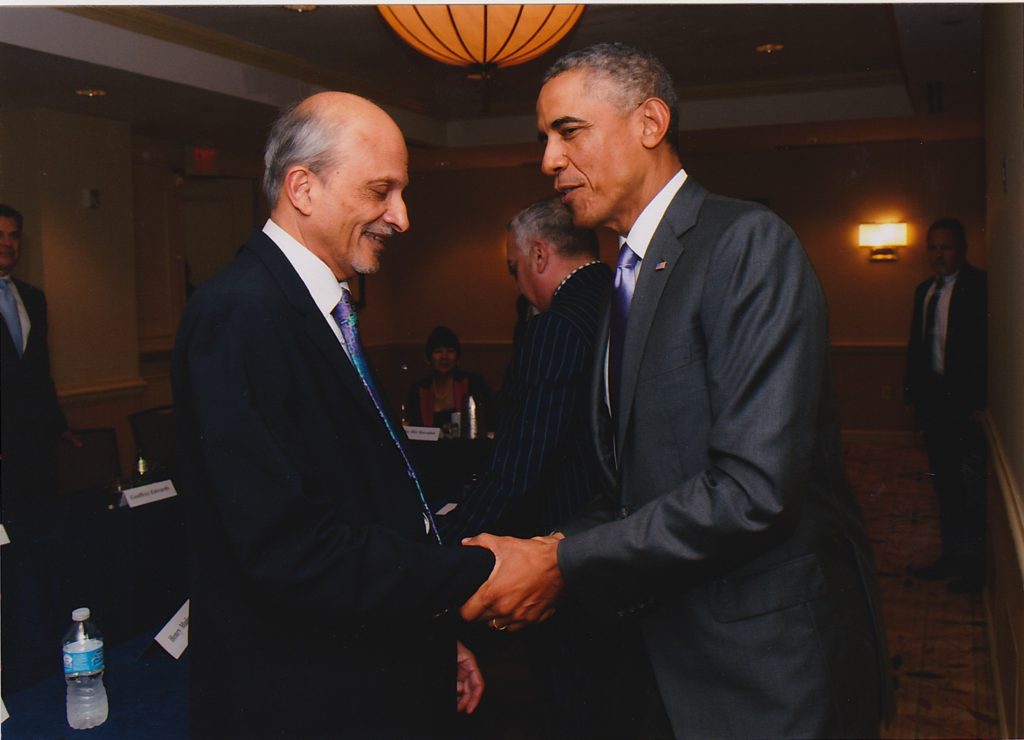
[dropcap]“W[/dropcap]e’re starting to show our money, power as well as running for office but we need to understand that the Indian-American community is by no means homogeneous,” he says. “It comprises of the first generation of immigrants, about 60-65 percent who were born in India and another 30-35 percent who are born in the US. While those born in India are a mix of conservatives and liberals, the ones born here are younger and tend to be more liberal as well.”
Karthick Ramakrishnan, who directs the National Asian American Survey and is founder of AAPIData.com, which publishes demographic data and policy research on Asian Americans and Pacific Islanders, says the Indian-American voters are still overwhelmingly Democrats. According to AAPIData, in 2016, 48 percent Indian-Americans identified as Democrats, 22 percent as Republicans and 30 percent as neither. He says these figures remain stable in spite of the Trump Adminstration making overtures to the community and having hired many Indian-Americans to prominent positions over the years such as Nikki Haley as US ambassador to the UN, Raj Shah as deputy press secretary, Ajit Pai as Chairman to the FCC, Seema Verma asAdministrator for the Center for Medicare and CMS, Neil Chatterjee as Chairman of FERC and Neomi Rao to the federal bench, among several others.
Says Karthick Ramakrishnan who is also a professor of public policy and political science at the University of California, “ In terms of either party identification or donor behavior, it hasn’t changed much at all, and Indian-Americans are still predominantly giving to Democratic presidential candidates and not to the Republicans.”
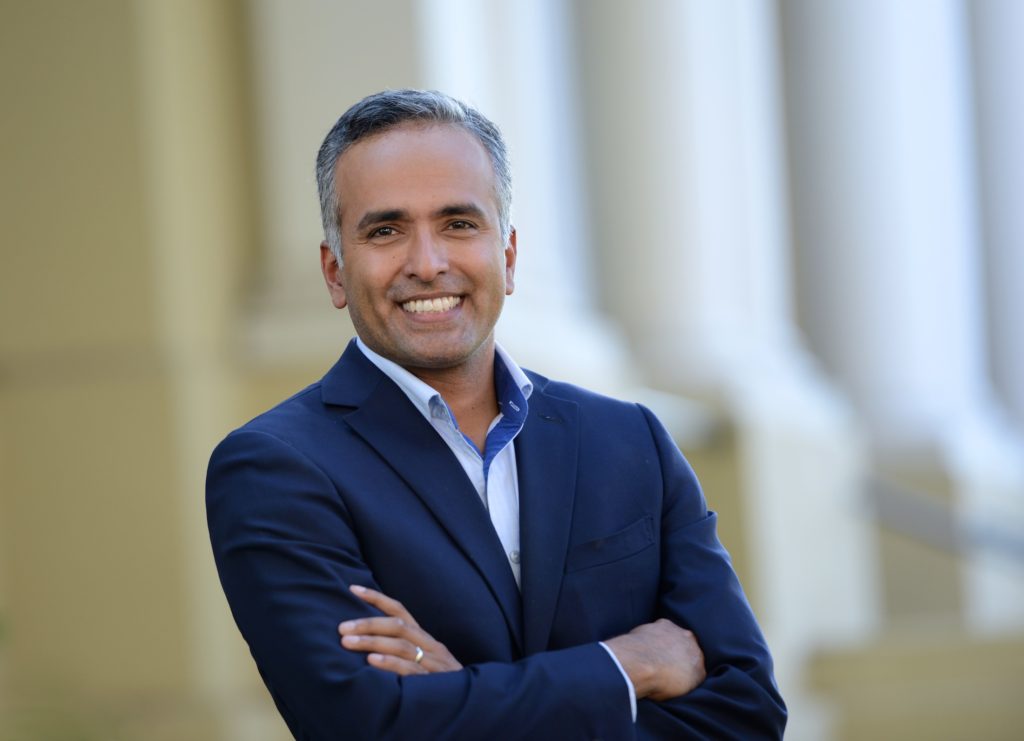
[dropcap]I[/dropcap]ndeed, Indian-Americans have embraced the Democratic Party since the start: in the US Congress we have the Samosa Caucus comprising of four Representatives:: Rep Ro Khanna, D-Calif., Rep. Ami Bera, D-Calif., Rep. Raja Krishnamoorthi, D-Ill., and Rep. Pramila Jayapal, D-Wash. Kamala Harris is the high profile Senator from California who became the first Indian-American woman to run for the US presidency. Last year, Suhas Subramanyam and Ghazala Hashmi won victories in the state senate of Virginia and helped flip the state from red to blue for the first time in a generation.
While Indian-Americans have traditionally voted Democrat, this year there are multiple choices for them and over $5 million have been donated by the community to candidates including Joe Biden, Elizabeth Warren, Bernie Sanders, Pete Buttigieg, Tulsi Gabbard and Amy Klobuchar. In fact, Indian-Americans are a presence in almost all the campaigns, as donors, staff and volunteers.
Seema Nanda, the CEO of the Democratic National Convention, says: “The DNC is pouring millions of dollars into six battleground states for the general election. No matter which Democratic candidate you support in 2020, a strong DNC working with strong state parties is vital for our nominee to win in 2020!”
Pramila Jayapal gave her endorsement to Bernie Sanders and will serve as the National Health Policy Chair and Washington State Chair of Bernie 2020. Jayapal joins Rep. Ro Khanna who is Co-Chair on the national Sanders campaign for president.
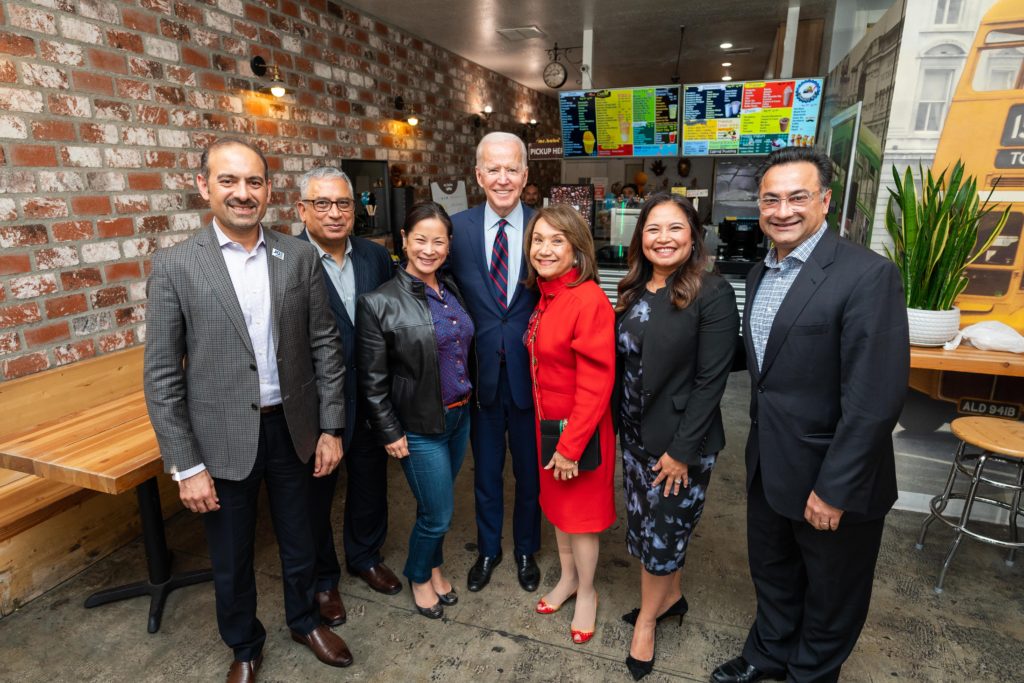
[dropcap]S[/dropcap]hekar Narasimhan, who is the founder and chairman of AAPI Victory Fund, has also seen the growing clout of the Indian-American community. ‘It’s remarkable that we have so many Indian Americans running major think tanks and policy organizations in Washington, We have so many Indians on the staff of not just the campaigns, but in congressional staffs. This next generation has taken it to another level, more quickly in my view than any other community in the history the United States,”
As founder of AAPI Victory Fund, the first Super Pac for Asians, he also sees Indian-Americans as part of the larger Asian community. He feels that Indian-Americans, coming from a land of diverse people and languages, fit right into the larger Asian community of 38 countries and many languages – yet sharing common goals and values. He says, “We have endorsed Joe Biden, but since the goal is to defeat President Trump, we will definitely support whoever the Democratic nominee is.”
While acknowledging that Indian-Americans tend to vote Democratic, Rangaswami says Trump and the Republican Party could appeal to the more conservative voters in the Indian-American community.
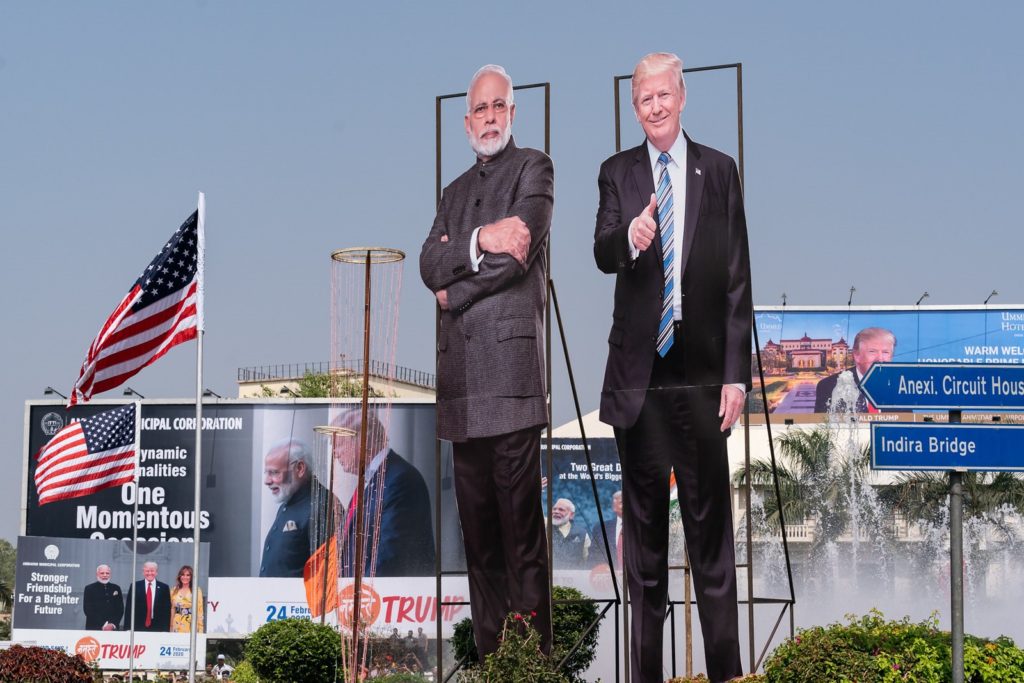
[dropcap]R[/dropcap]ichard Russow, the Senior Fellow and Wadhwani Chair in India-U.S. Policy Studies at the Center for Strategic and International Studies (CSIS) in Washington D.C, believes that President Trump has made a concerted effort to engage India: “We’ve got some tensions, particularly around trade issues but the President hasn’t allowed that to pollute the waters, like it has with some other relationships. And so even though he’s been aggressively pursuing trade remedies in areas where we think the Modi government has closed the door to trade, he has still continued to pursue and engage India very positively.”
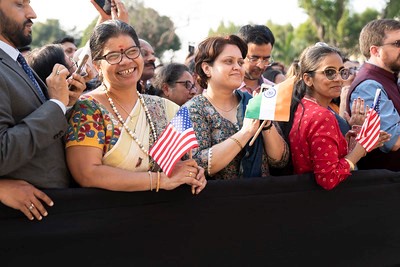
[dropcap]H[/dropcap]e believes that the India trip at the end of his first term is a pretty significant step and whether it has a huge impact in terms of swaying Indian-American voters remains to be seen. Russow, who had just returned from a month long visit to seven states meeting with political and business leaders, says, “ I think by and large the view from India is that there’s a there’s a very significant chance that President Trump will be re-elected.”
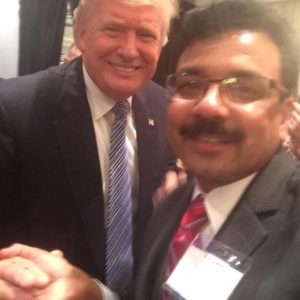
[dropcap]A[/dropcap]sk Indian-American Republicans and they say it is a sure-fire Trump win. Raju Chinthala is a diehard Republican, who is the founder and president of the Indiana Business Council, and deeply involved with growing the India-US business aspect. He says, “The POTUS visit to India this month will strengthen US India relations tremendously in the coming decades. It’s a right time for his visit to sign all trade agreements between two countries.”
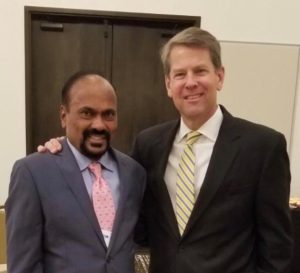
[dropcap]N[/dropcap]arender Reddy, a long-time Republican in Atlanta, has been involved in fund-raising for Republican Governors, Senate and Congressional candidates. He was Georgia State Vice Chairman (Finance Committee) for President George W Bush’s reelection campaign and was elected to the Electoral College. He believes the landscape is changing where Indian-American voters are concerned.
“Indian Americans think the Democratic Party of 1960s is still the same though the party’s agenda is drastically changed today to the so-called ‘progressive agenda’ of ‘tax the rich’, ‘race based affirmative action’ in educational institutions that is detrimental to Indian American children getting admissions into prestigious universities; and economic agenda which is against the interests of Indian-American Community,” he says. “It is time for us to end our blind loyalty to the Democratic Party and support the Republican Party.”
He mentions Trump’s pro-business reforms, the high stock market and the merit-based immigration as beneficial to the Indian-American community. He points to the fact that the Trump Administration stood by India for its self defense attacks on Pakistan, and believes the Trump showed respect for India’s internal policies by not interfering in the recent laws passed by India’s Parliament in approving the deletion of Article 370 or Citizenship Amendment Act.
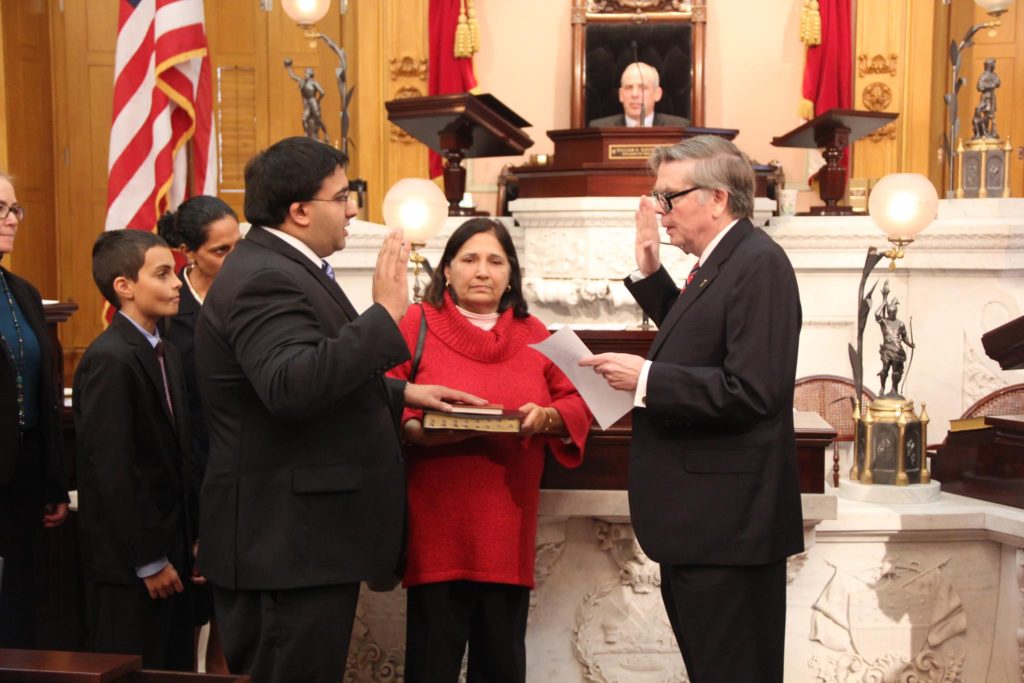
[dropcap]S[/dropcap]econd generation Indian-Americans are also becoming prominent in the Republican Party. Niraj Antani was only 23 when he became an Ohio State Representative and is now the highest-ranking and the youngest elected Indian-American in the country, in either of the two parties. He was named to the “Top 30 Conservatives Under Age 30 in the United States” list and also Republican Man of the Year by the Montgomery Republican Party, A strong conservative, Antani is a member of the NRA and a right-to-lifer. Now at 28, he’s running for the Ohio State Senate.
Ask him why he thinks the Republican Party is good for desis and he says, “Indian-Americans benefit from the policies that the party has propagated. We are the pro-growth, pro-business, pro-jobs party. Democrats are on the fringes, fighting for illegal immigrants, unlike legal immigrants which Indian-Americans have been. Trump also has a great record of nominating Indian-Americans for different posts.”
[dropcap]D[/dropcap]oes Antani think there will be a swing of many Hindu voters towards Republicans because of Trump’s India visit and affinity for Modi? “Indian-Americans tend to vote Democratic but I think the tide is turning,” he says. “The Prime Minister has great influence and has a conservative mindset. You know that’s what people want – they want strong conservative leadership and that’s what the President and the Prime Minister provide.”
Karthick Ramakrishnan believes a favorable opinion of Modi would not translate into support for Trump and that’s because, for Indian Americans, it’s not just what’s going on in India that matters but also what going on in the US, including opinion on healthcare, education, immigration and the rhetoric on race. In his study of immigrants, Ramakrishnan has found similarities between the Jewish and Indian communities.
He notes that many of the wealthy, highly educated Indian Americans do not support the Republican Party because it is not strong on fighting discrimination whereas the Democratic Party is better at it. In research done in 2012, he found Indian-Americans who earned over $250,000 were quite willing for taxes to be raised on those earning that figure, including themselves. He says, “They believe that it’s good for the country and they’re also Democrats. Because they are Democrats, they favor raising taxes on the rich,”
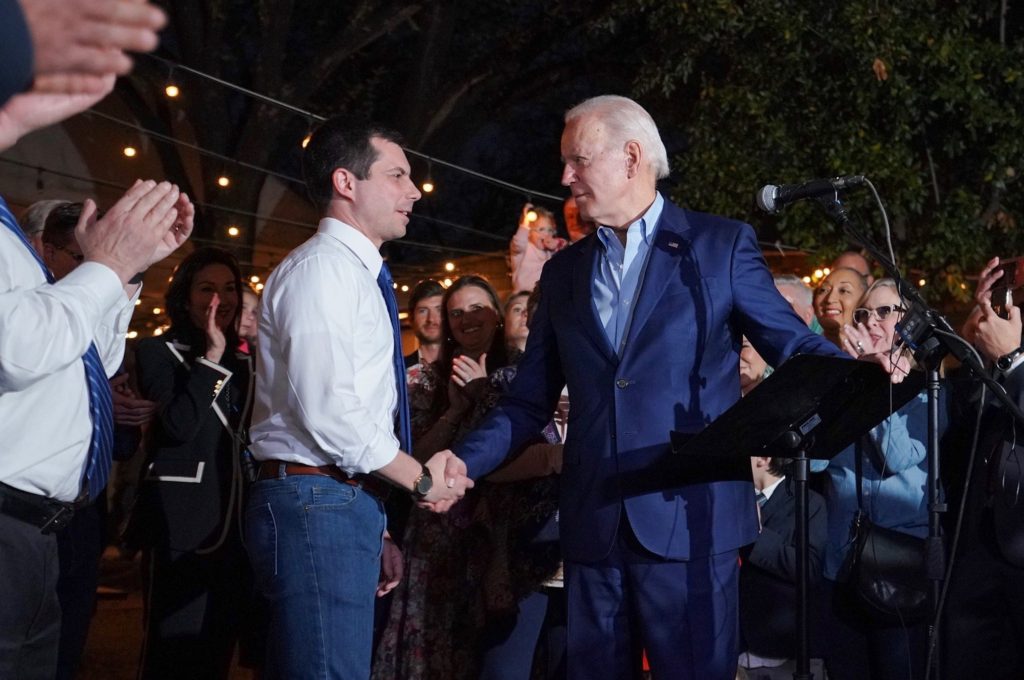
The Democratic contenders are just as determined to make Trump a part of the past. Almost every candidate from Joe Biden to Elizabeth Warren to Bernie Sanders had said they would support the winning candidate against Trump to ensure that he is a one-term president. Pete Buttigieg, Amy Klobuchar and Beto O Rourke have all dropped out and given their support to Biden.
Mayor Mike Bloomberg, the multi-billionaire who was a late entrant in the presidential race had gone so far as to say that if he doesn’t win, he would put his millions behind whoever is the winning Democratic candidate. After Super Tuesday and Joe Biden’s strong showing, he has endorsed him.
November is still a long way off and the race dynamics change by the hour, with Joe Biden and Bernie Sanders in a heated two-man race. However, one thing is clear: even though there are Indian-American Republicans, the bulk of the Indian-American community is solidly behind whoever wins the Democratic nomination.
Of course, Indian-Americans are also part of Asian-Americans, a voting bloc that’s part of the fastest growing racial group and is expected to double by 2040. According to 2018 Asian American Voter Survey, there is room for both parties to grow with nearly two in five Asian-American registered voters not identifying as either a Democrat or Republican.
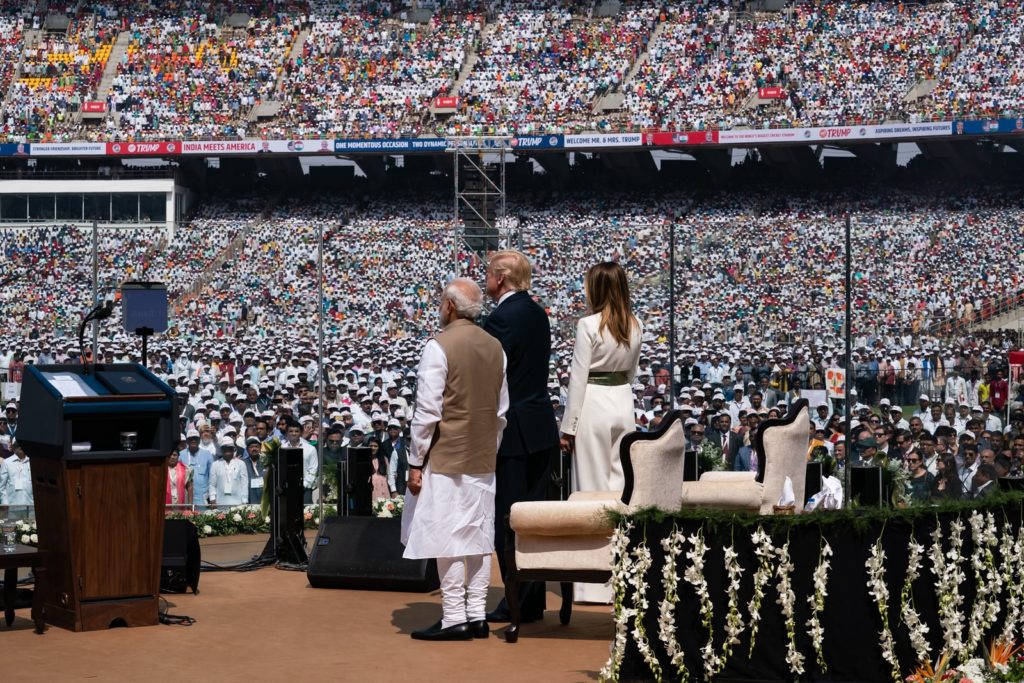
[dropcap]M[/dropcap]eanwhile Trump’s India visit should provide high drama and pageantry and may influence some minds. As Rangaswami points out, Trump has put India and Indian-Americans in the mainstream by attending the Howdy Modi event in Houston which was huge for the Indian community. Earlier such events were on the radar of only the Indian or Indian-American media, but Trump’s presence transformed it into an international event with every media from CNN to The Wall Street Journal covering it.
Says M.R. Rangaswami, “This shows the Indian-American community has come of age, whether you agree with Trump or not. So for us, this is definitely a side-benefit. With his visit to India, we will once again be in the spotlight as a country and as a community – and that’s been a very positive thing for us.”
None of us are masters of the crystal ball, and the US Presidential race is very much a work in progress, a waiting game. There’s a whirlpool of beliefs, principles and ideas that are battling it out in a divided nation. How it all turns out remains to be seen…
(This article first appeared in The Week.in)
Related Articles:
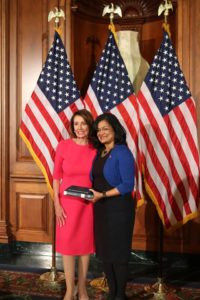
Indian-Americans and US Politics – A Win-Win
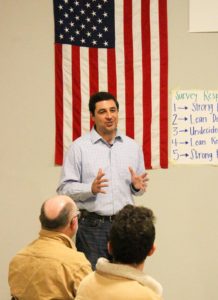

4 Comments
Thanks Narendra – glad you liked it!
Narender Reddy via Facebook
Nice article with different perspectives of Indian Americans about Indian American participation in the next Presidential elections.
Thanks Richard – so glad you liked it. It’s a fascinating topic and I had so many experts weighing in!
Super, superbly written article, Lavina, totally well balanced survey of the Indian American political scene, it’s got excellent clarity and context. Cheers.